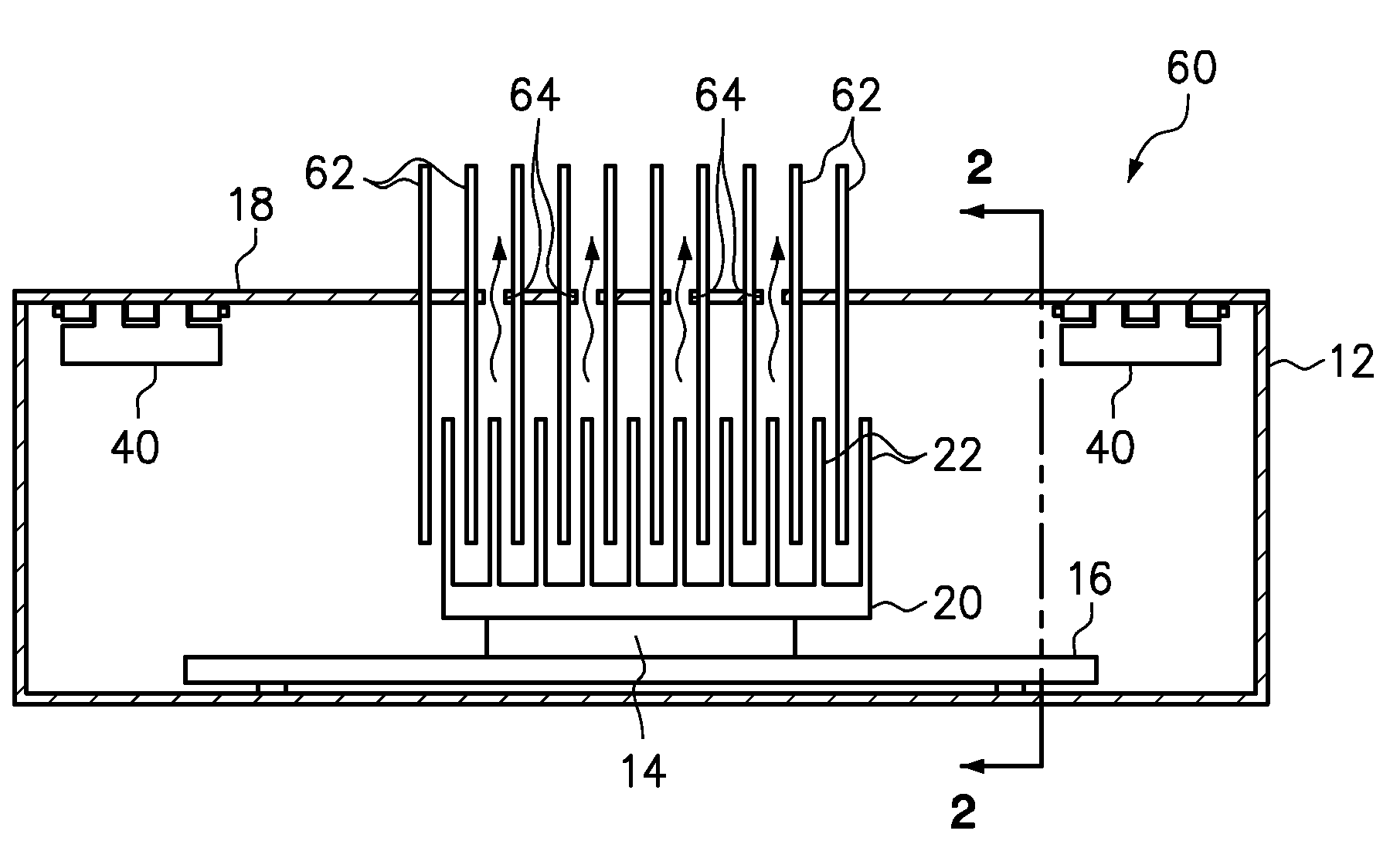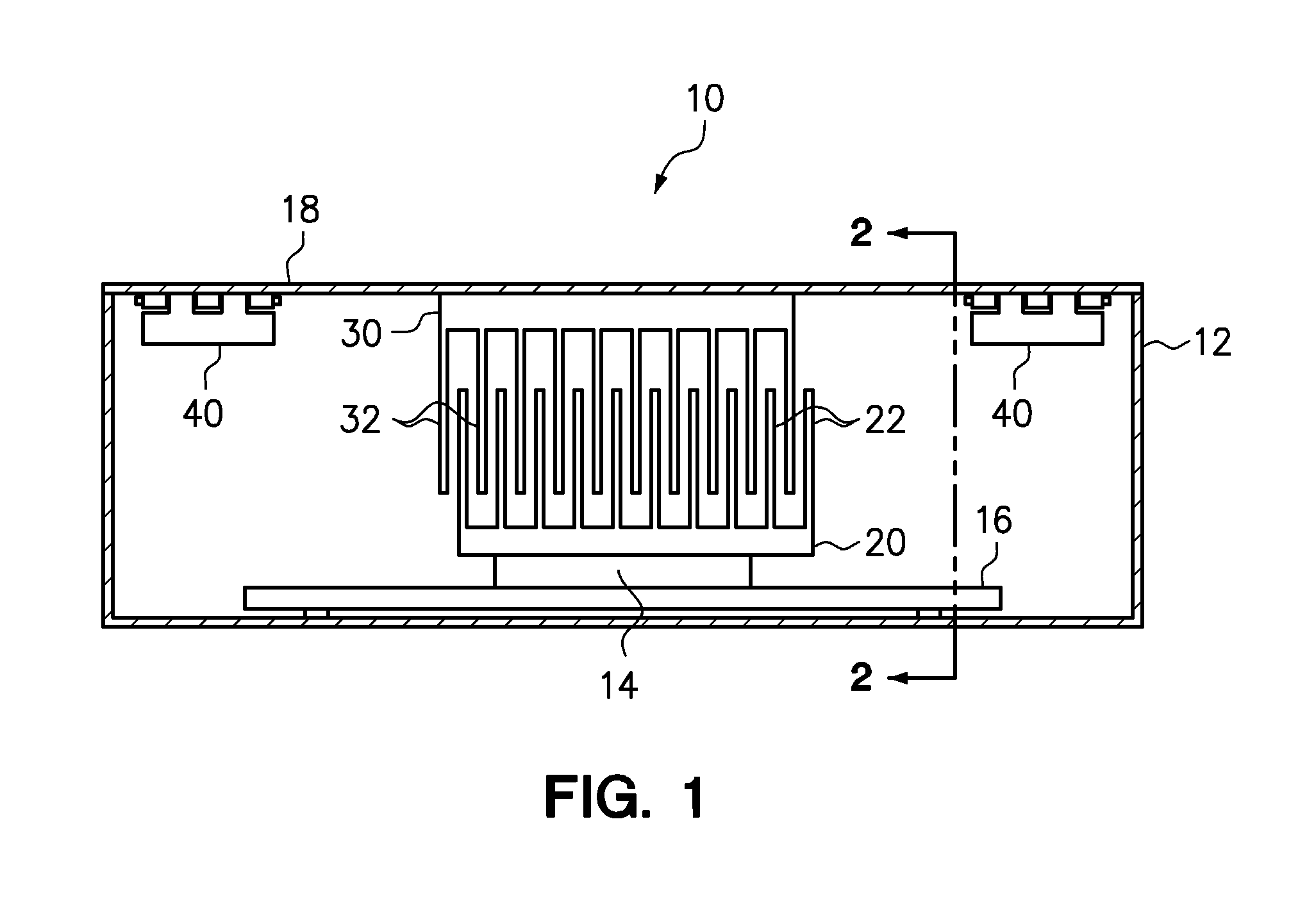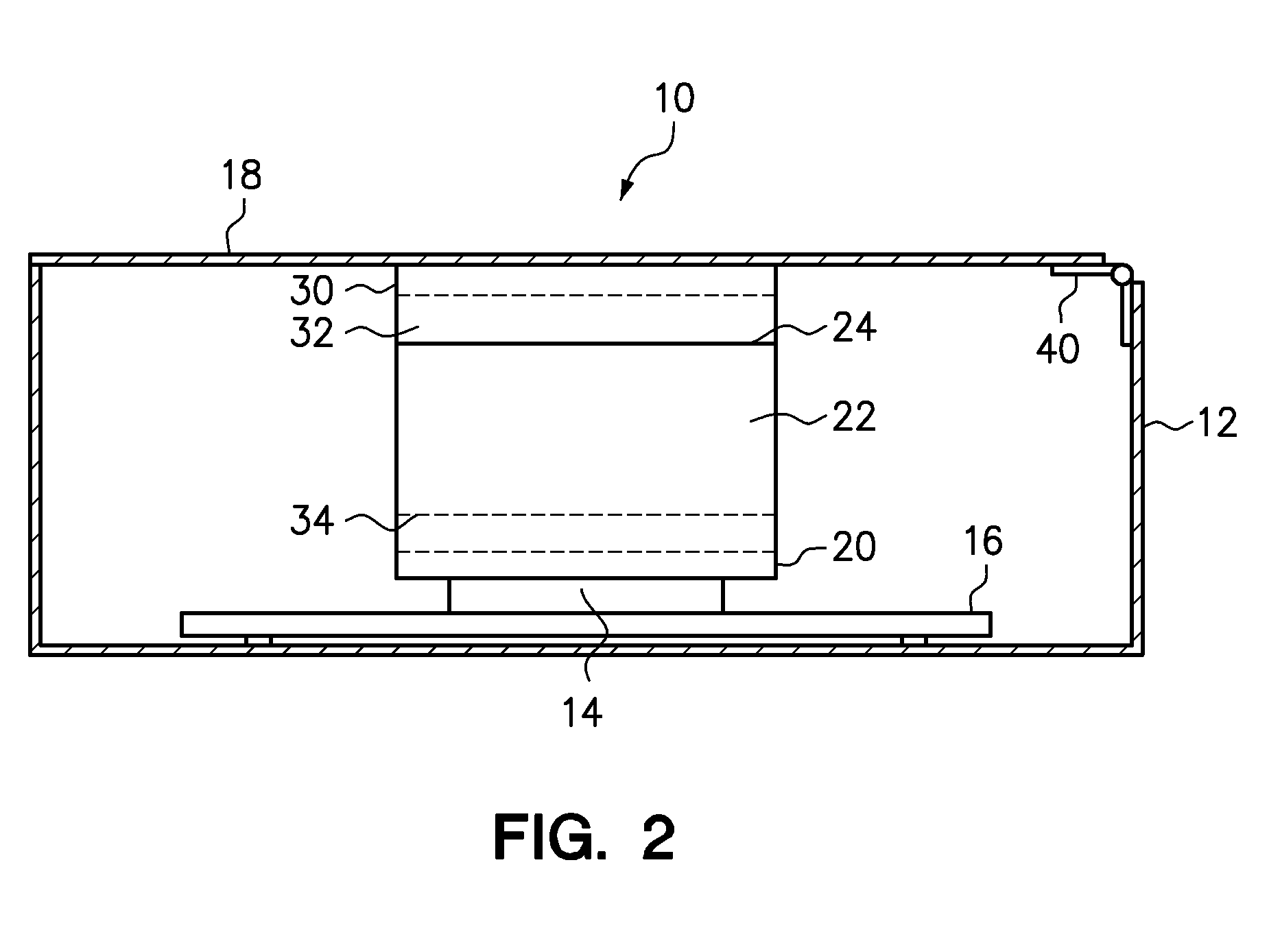Heat transfer apparatus
a technology of heat transfer apparatus and heat exchanger, which is applied in the direction of conduction heat transfer modification of electrical apparatus, instruments, and casings of electrical apparatus, which can solve the problems of insufficient or inaccessible convective heat removal in some chassis, cpus, chipsets, and hard drives that consume electrical current and generate heat during operation,
- Summary
- Abstract
- Description
- Claims
- Application Information
AI Technical Summary
Problems solved by technology
Method used
Image
Examples
Embodiment Construction
[0014]Various embodiments of the present invention are directed to an apparatus that facilitates passive heat transfer from a first heat sink thermo-conductively coupled to the heat generating component to a second heat sink thermo-conductively coupled to an opposing portion of a chassis. The first heat sink has a plurality of fins, referred to herein as “leader fins,” thermo-conductively coupled to the heat-generating electronic component. The second heat sink also has a plurality of fins, referred to herein as “follower fins,” thermo-conductively coupled to a portion of the computer chassis. The follower fins are interlaced, in an operative position, with the plurality of leader fins to facilitate radiative heat transfer from the plurality of leader fins to the plurality of follower fins. In addition to radiative heat transfer, the apparatus is capable of supporting heat transfer from the first heat sink to the second heat sink through natural convection. Although the apparatus ma...
PUM
 Login to View More
Login to View More Abstract
Description
Claims
Application Information
 Login to View More
Login to View More - R&D
- Intellectual Property
- Life Sciences
- Materials
- Tech Scout
- Unparalleled Data Quality
- Higher Quality Content
- 60% Fewer Hallucinations
Browse by: Latest US Patents, China's latest patents, Technical Efficacy Thesaurus, Application Domain, Technology Topic, Popular Technical Reports.
© 2025 PatSnap. All rights reserved.Legal|Privacy policy|Modern Slavery Act Transparency Statement|Sitemap|About US| Contact US: help@patsnap.com



